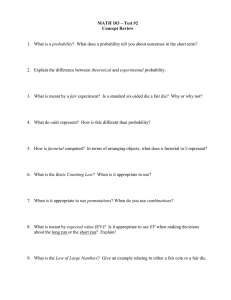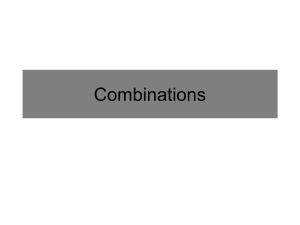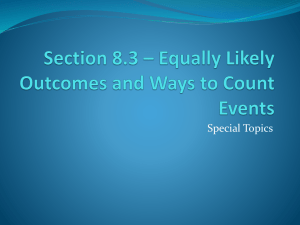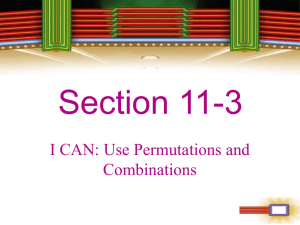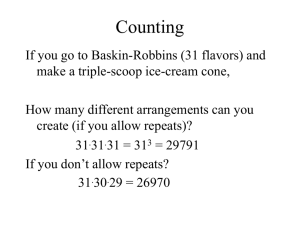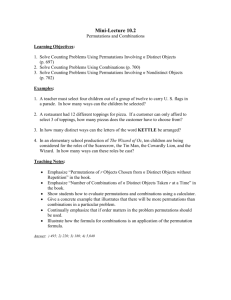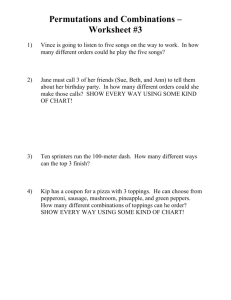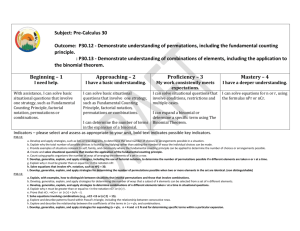Permutations and Combinations Factorial: Denoted by the
advertisement
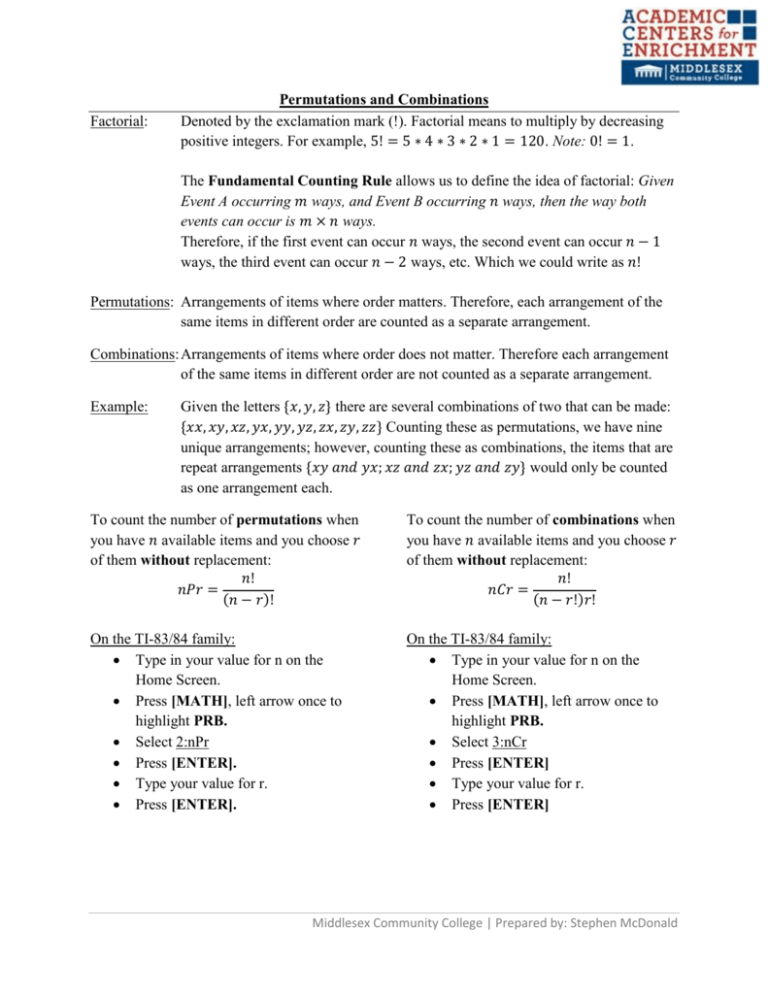
Factorial:
Permutations and Combinations
Denoted by the exclamation mark (!). Factorial means to multiply by decreasing
positive integers. For example, 5! = 5 ∗ 4 ∗ 3 ∗ 2 ∗ 1 = 120. Note: 0! = 1.
The Fundamental Counting Rule allows us to define the idea of factorial: Given
Event A occurring 𝑚 ways, and Event B occurring 𝑛 ways, then the way both
events can occur is 𝑚 × 𝑛 ways.
Therefore, if the first event can occur 𝑛 ways, the second event can occur 𝑛 − 1
ways, the third event can occur 𝑛 − 2 ways, etc. Which we could write as 𝑛!
Permutations: Arrangements of items where order matters. Therefore, each arrangement of the
same items in different order are counted as a separate arrangement.
Combinations: Arrangements of items where order does not matter. Therefore each arrangement
of the same items in different order are not counted as a separate arrangement.
Example:
Given the letters {𝑥, 𝑦, 𝑧} there are several combinations of two that can be made:
{𝑥𝑥, 𝑥𝑦, 𝑥𝑧, 𝑦𝑥, 𝑦𝑦, 𝑦𝑧, 𝑧𝑥, 𝑧𝑦, 𝑧𝑧} Counting these as permutations, we have nine
unique arrangements; however, counting these as combinations, the items that are
repeat arrangements {𝑥𝑦 𝑎𝑛𝑑 𝑦𝑥; 𝑥𝑧 𝑎𝑛𝑑 𝑧𝑥; 𝑦𝑧 𝑎𝑛𝑑 𝑧𝑦} would only be counted
as one arrangement each.
To count the number of permutations when
you have 𝑛 available items and you choose 𝑟
of them without replacement:
𝑛!
𝑛𝑃𝑟 =
(𝑛 − 𝑟)!
To count the number of combinations when
you have 𝑛 available items and you choose 𝑟
of them without replacement:
𝑛!
𝑛𝐶𝑟 =
(𝑛 − 𝑟!)𝑟!
On the TI-83/84 family:
Type in your value for n on the
Home Screen.
Press [MATH], left arrow once to
highlight PRB.
Select 2:nPr
Press [ENTER].
Type your value for r.
Press [ENTER].
On the TI-83/84 family:
Type in your value for n on the
Home Screen.
Press [MATH], left arrow once to
highlight PRB.
Select 3:nCr
Press [ENTER]
Type your value for r.
Press [ENTER]
Middlesex Community College | Prepared by: Stephen McDonald
